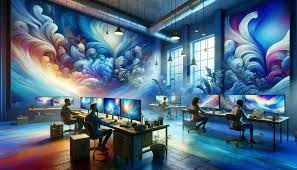Unity Character Avatars: Bringing Your Game Characters to Life
Creating compelling and lifelike characters is a crucial part of game development. Unity, one of the most popular game engines, offers a robust set of tools for creating character avatars that not only look great but also feel real to players. In this blog post, we'll dive into the process of creating Unity character avatars, exploring the tools, techniques, and best practices to bring your game characters to life.
What are Unity Character Avatars?
Unity character avatars are digital representations of characters within a game. They can range from simple, stylized figures to highly detailed and realistic models. These avatars are crucial in defining the player's experience, as they often serve as the primary means of interacting with the game world.
Getting Started with Unity Avatars
Before you dive into creating avatars, it's important to understand the basic workflow in Unity:
- Modeling: Create a 3D model of your character using tools like Blender, Maya, or ZBrush.
- Rigging: Add a skeleton to your model to make it animatable. This involves defining bones and joints.
- Animation: Create animations for different actions like walking, running, jumping, and idle states.
- Importing into Unity: Bring your 3D model and animations into Unity.
- Configuring in Unity: Use Unity's Animator component and Mecanim system to control and manage animations.
1. Modeling Your Character
The first step in creating a character avatar is designing and modeling your character. This can be done in various 3D modeling software programs. While modeling, consider the following:
- Polygon Count: Keep an eye on the polygon count to ensure your character is optimized for performance.
- Textures and Materials: Apply textures and materials to give your character a finished look.
2. Rigging for Animation
Rigging is the process of adding a skeleton to your character model. This skeleton allows you to animate your character by moving the bones. In Unity, this is crucial for creating realistic movements. Here are some tips for effective rigging:
- Use a consistent naming convention for bones.
- Create a hierarchy where the root bone controls the entire skeleton.
- Weight painting ensures that movements look natural.
3. Animating Your Character
Animations bring your character to life. Unity's Mecanim system is a powerful tool for managing animations. You can create animations in external software and import them into Unity, or use Unity’s built-in animation tools. Common animations include:
- Idle: The character's default state.
- Walk/Run: Movements for navigating the game world.
- Jump: A transition from the ground to the air and back.
- Attack: Any combat-related actions.
4. Importing into Unity
Once your character is modeled, rigged, and animated, it’s time to import it into Unity. Here's a quick guide:
- Export your model and animations from your 3D software in a format that Unity supports, such as FBX.
- Import the FBX file into Unity.
- Configure the import settings to ensure that the model and animations are correctly interpreted by Unity.
5. Configuring Your Character in Unity
After importing your character, the next step is to set up the Animator component and create an animation controller:
- Add an Animator component to your character.
- Create an Animation Controller: This defines how animations transition from one state to another.
- Define Animation States: Use the Animator window to set up states like Idle, Walk, Run, and Jump.
- Set Up Transitions: Define conditions under which the character transitions from one animation state to another.
Best Practices
- Optimize for Performance: Ensure that your character model and animations are optimized to run smoothly on your target platforms.
- Test Thoroughly: Regularly test your animations in the game to ensure they look and feel right.
- Iterate and Improve: Game development is an iterative process. Be prepared to make changes and improvements based on feedback and testing.
Conclusion
Creating character avatars in Unity is a rewarding process that combines art and technology. By following these steps and best practices, you can bring your game characters to life, providing an immersive and engaging experience for your players. Happy developing!
For more topics, see https://bleedingedge.studio/blog/

.png)
.jpg)

Comments
Post a Comment